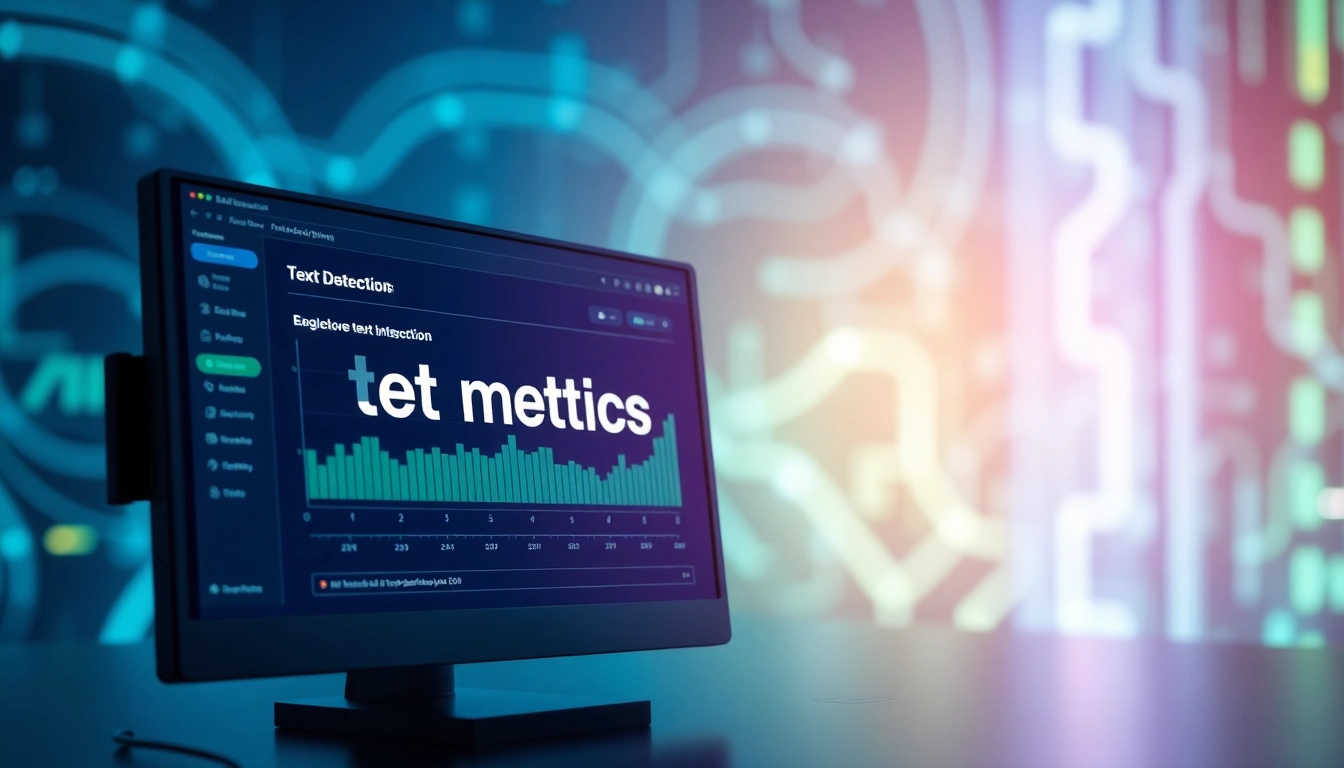Understanding the ai detector Technology
What is an ai detector?
An ai detector is a specialized tool designed to identify whether a piece of text has been generated by artificial intelligence. As AI technology has advanced, particularly in natural language processing, it has become increasingly difficult to distinguish between human-generated and machine-generated content. The ai detector plays a crucial role in various domains, including education, journalism, and online content creation, by ensuring authenticity and integrity.
How ai detectors work
Most ai detectors employ machine learning algorithms and natural language processing techniques to analyze text. These systems are trained on vast datasets containing both human-written and AI-generated content, allowing them to recognize patterns and characteristics unique to each. The detection process typically involves several key steps:
- Pre-processing: The tool cleans and standardizes the text to ensure proper analysis.
- Feature extraction: The ai detector identifies linguistic features, such as sentence structure, word choice, and punctuation patterns, that may indicate AI authorship.
- Model application: Using trained algorithms, the detector evaluates the text against established criteria to calculate the likelihood of AI involvement.
- Reporting: The tool provides feedback on the analyzed text, often highlighting sections that are more likely to be AI-generated.
Common uses of the ai detector
Ai detectors find applications across various fields, including:
- Education: Institutions use them to maintain academic integrity, ensuring that students submit original work.
- Publishing: Editors leverage ai detectors to verify the authenticity of submissions and comply with ethical standards.
- Marketing: Marketers can ensure that their content aligns with brand values and resonates authentically with their audience.
- Research: Researchers can employ these tools to evaluate the originality of academic papers and publications.
Benefits of Using an ai detector
Improving content authenticity with ai detector
In a world where misinformation can spread rapidly, ensuring content authenticity is paramount. An ai detector enhances credibility by:
- Verifying the origin of content, thereby avoiding the dissemination of potentially misleading information.
- Helping creators maintain their reputation by ensuring that their work is original and not misattributed.
- Encouraging transparency in content creation, fostering trust among audiences.
Ensuring academic integrity using the ai detector
Institutions can safeguard academic integrity by employing ai detectors to:
- Identify instances of plagiarism, whether from human-written or AI-generated sources.
- Encourage students to improve their writing skills while discouraging academic dishonesty.
- Facilitate honest evaluation and grading practices based on original student work.
Enhancing editorial quality through ai detection
Editorial teams benefit significantly from using an ai detector by:
- Ensuring that content adheres to established quality standards.
- Identifying AI-generated content that may require adjustments or nuances to align with the desired editorial voice.
- Facilitating a more systematic review process, allowing for timely corrections and enhancements.
Choosing the Right ai detector Tool
Key features to look for in an ai detector
When selecting an ai detector, consider the following key features:
- Accuracy: The tool should excel at distinguishing between AI-generated and human-generated text with high reliability.
- User interface: A straightforward and intuitive interface will enhance user experience, making analysis efficient.
- Integration capabilities: The ability to integrate with existing content management systems and writing platforms will streamline workflows.
- Reporting functionality: Comprehensive reports outlining key findings can provide actionable insights for users.
Comparison of popular ai detector tools
The market is filled with various ai detector tools, each offering unique features and capabilities. When comparing these options, evaluate:
- Pricing: Determine if the tool fits within budget constraints while still meeting quality expectations.
- User reviews: Research and analyze user feedback to gauge the effectiveness and reliability of available detectors.
- Trial options: Utilize free trials where available to assess functionality before committing to a subscription.
Evaluating performance metrics of ai detectors
Performance metrics play a critical role in assessing the effectiveness of ai detectors. When evaluating potential tools, consider factors such as:
- Precision and recall: High precision indicates the tool correctly identifies the majority of AI-generated content while maintaining a low false positive rate.
- Response time: The speed at which the tool processes text can significantly impact workflow efficiency.
- Usability testing: Conducting usability tests can help determine how readily users can understand and operate the tool.
Implementing ai detector for Content Optimization
Step-by-step guide to using an ai detector
To effectively utilize an ai detector for content optimization, follow this step-by-step guide:
- Step 1: Select an appropriate ai detector based on your specific needs and preferences.
- Step 2: Prepare the text you wish to analyze, ensuring it is formatted correctly for optimal results.
- Step 3: Input the text into the ai detector, following any specific instructions provided by the tool.
- Step 4: Review the results, paying close attention to sections flagged for potential AI generation.
- Step 5: Make necessary edits to enhance originality and ensure authenticity.
- Step 6: Re-test the modified text using the ai detector for confirmation of corrections.
Best practices for integrating ai detection in workflows
To maximize the benefits of ai detection within your workflows, adhere to the following best practices:
- Establish clear protocols: Define guidelines on when and how to use the ai detector throughout the content creation process.
- Train team members: Ensure that all content creators are familiar with the tool and its functionalities.
- Gather feedback: Continually solicit input from team members on the effectiveness and usability of the ai detector, making adjustments as necessary.
Monitoring and adapting to detection results
Monitoring outcomes post-analysis is critical to continuous improvement. To effectively adapt to detection results, consider:
- Regular reviews: Schedule periodic assessments of content using the ai detector to maintain high-quality standards.
- Data-driven decision-making: Analyze trends and patterns in detection results to inform future content strategies.
- Iterative refinement: Encourage an environment where feedback is used constructively to enhance content quality over time.
The Future of ai detector Technology
Emerging trends in ai detection
The domain of ai detection is continuously evolving. Emerging trends include:
- Increased accuracy: Ongoing advancements in machine learning algorithms are expected to substantially enhance detection accuracy.
- Real-time detection: Future developments may allow for instant identification of AI-generated content during the creation process.
- User-friendly innovations: Tools are likely to incorporate more user-friendly features that enhance accessibility for non-technical users.
Potential impacts on content creation and consumption
As ai detection technology advances, it is poised to significantly impact both content creation and consumption:
- Enhanced content quality: The widespread adoption of ai detectors is likely to lead to higher standards in content creation as more creators prioritize originality.
- Shifts in audience trust: Recognizing the use of ai detectors in verifying content can foster trust among consumers, leading to more informed consumption choices.
- Ethical content creation: The prevalence of detection tools may encourage a culture of ethical practices in content development, promoting transparency and accountability.
Ethical considerations for ai detector use
While the benefits of ai detectors are significant, ethical considerations must also be acknowledged:
- Privacy concerns: Users should be aware of data privacy issues, ensuring that the analysis does not compromise sensitive information.
- Potential biases: The algorithms’ inherent biases could skew results, leading to misinterpretations of originality or authorship.
- Transparency in usage: Organizations must maintain transparency regarding when and how ai detectors are employed, particularly in academic settings.



